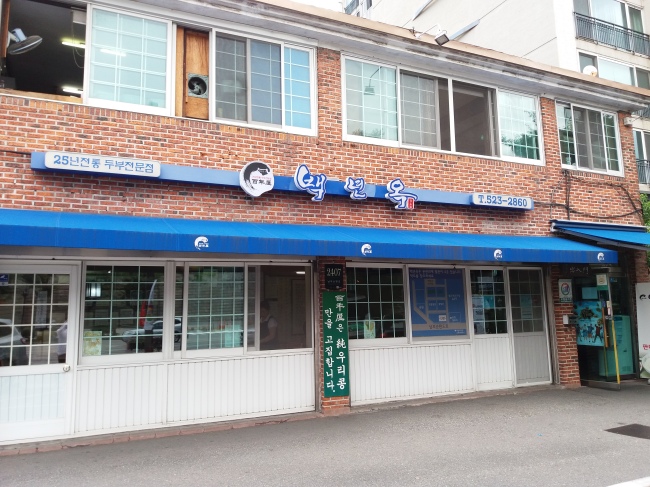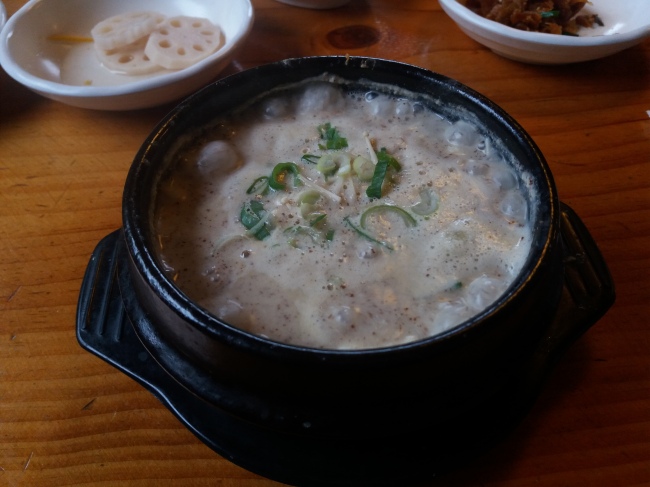[The Palate] Healthful and humble Wild Perilla plant, deulkkae
By Korea HeraldPublished : Sept. 2, 2016 - 13:50
There are foods and dishes that are instantaneously identifiable with certain cuisines and become culinary symbols for whole countries: Italy and pizza, Argentina and steak, the US and hamburgers.
If there were ever a dish that exemplified Korean cuisine it would most certainly be kimchi. Synonymous with the pungent spicy fermented foods of Korean cuisine, and currently enjoying its moment of fame having stepped out of a less than appealing light, kimchi has crossed many borders and palates around the world and became a symbol of Korea.
Delve deeper into Korean cuisine, or any other food culture, and one would find a number of dishes that cannot be found outside of the country. If you dig even deeper, there are ingredients that are indigenous and special to the country and rooted on to its homeland.
If there were ever a dish that exemplified Korean cuisine it would most certainly be kimchi. Synonymous with the pungent spicy fermented foods of Korean cuisine, and currently enjoying its moment of fame having stepped out of a less than appealing light, kimchi has crossed many borders and palates around the world and became a symbol of Korea.
Delve deeper into Korean cuisine, or any other food culture, and one would find a number of dishes that cannot be found outside of the country. If you dig even deeper, there are ingredients that are indigenous and special to the country and rooted on to its homeland.

The popularity of a dish is usually determined by how far reaching it has become on a global scale. So when one discovers a dish you would rarely see on menus abroad or even domestically, one can’t help but be curious.
Culinary underdogs, if you will, are dishes that are often an acquired taste or enjoyed by a small following. Especially in a country like Korea where nothing measures up to the most beloved and symbolic dishes such as bulgogi, kimchi jjigae, and bossam, it would be easy to forget about humble, local dishes that are beautiful in their own right.
The local plant deulkkae, or wild perilla herb, has been adapted into many types of Korean food products as well as dishes. It’s leaf, kkaennip, is most popularly known as a fresh herb found in ssam baskets alongside grilled foods or pickled in soy sauce as a banchan, or side dish. The less than well known product derivative of the wild perilla plant is ground deulkkae powder, used as an accent to a number of dishes.
Often an acquired taste, with a flavor either enjoyed or met with a strong aversion, the addition of ground perilla seed powder is a highly nutritious one. Whether used as a healthy supplement to a dish for its high omega-3 fatty acids, fiber, and beautifying benefits, or used for culinary purposes, adding an earthy nutty aroma and texture, it definitely is not a mainstream ingredient, but a subtle and captivating one compared to the bold flavors that Korean cuisine is well known for.

Deulkkae can be found in vegetable banchan dishes or as an addition to meat soups such as, gamjatang or sujebi, the torn flour dumplings soup. A great way to enjoy ground deulkkae in all of its purity is to mix it into a fresh sundubu (silken tofu) soup. Though not easy to find, the combination of the milky tofu and grainy deulkkae compliment each other well, and one can appreciate a healthful break from the usual culinary stars.
Places to enjoy deulkkae sundubu:
Giwajib Sundubu
Address:
Baealmi-dong 1, Hanam City, Gyeonggi Province
Telephone:
(031)793-0838
Baengnyeonok
Address:
1450-6, Seocho-dong, Seocho-gu, Seoul
Telephone:
(02)523-2860
By Christine Cho (thepalatekorea@gmail.com)
Christine Cho, a Korean-American expat in Seoul, has been eating and cooking her way around the world for 16 years as a private chef. -- Ed.
-
Articles by Korea Herald





![[Herald Interview] 'Amid aging population, Korea to invite more young professionals from overseas'](http://res.heraldm.com/phpwas/restmb_idxmake.php?idx=644&simg=/content/image/2024/04/24/20240424050844_0.jpg&u=20240424200058)












![[KH Explains] Korean shipbuilding stocks rally: Real growth or bubble?](http://res.heraldm.com/phpwas/restmb_idxmake.php?idx=652&simg=/content/image/2024/04/25/20240425050656_0.jpg&u=)

